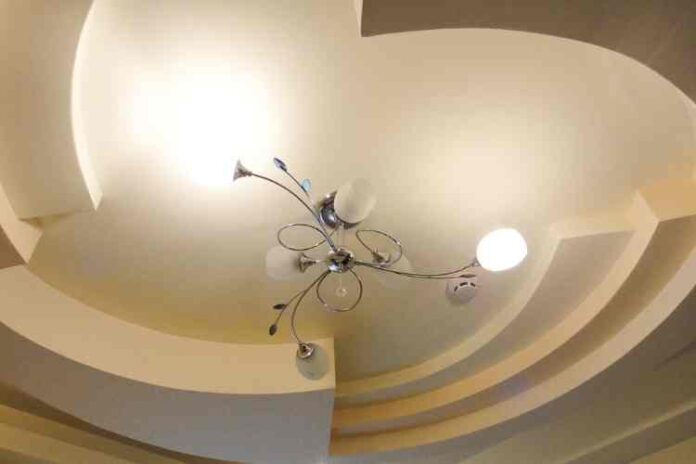Get ready for a practical ceiling system you’ll love.
Builders and architects used to be able to focus on a few standard ceiling options. However, today’s homeowners want more options. The standard open or flat ceiling is no longer sufficient.
Instead, you want a modular ceiling system. These ceilings combine the best ceilings features of standard and suspended ceilings. The result is a more pleasing aesthetic and more functionality.
Ready to learn more? Keep reading to learn the benefits of modular ceilings.
Increased Design Flexibility
This means that they can be adapted to suit the changing needs of a space, as well as the changing taste of the people using the space. For example, a modular ceiling can be opened up to create a more spacious feel, or it can be closed in to create a more intimate atmosphere.
Additionally, modular ceilings can be used to create different acoustics within a space, depending on the needs of the user. This flexibility makes modular ceilings a versatile option for both commercial and residential spaces.
Installed Quickly and Easily
One of the main benefits of modular ceilings is that they can be installed quickly and easily. This is because panels are pre-cut and fit together like a puzzle, meaning that there is no need for complex cutting or measuring.
This is great news for both businesses and homeowners who want to update their ceilings without having to deal with the hassle and expense of traditional ceiling installation.
In addition, modular ceilings can be easily adapted to any space, as they can be trimmed to size and installed in any shape or configuration. As a result, they are an ideal solution for both new build and refurbishment projects.
Enhanced Durability
They are designed to withstand heavy traffic and are often made from tough, high-quality materials. This means that they can last for many years, making them a great investment for any business.
Modular ceilings are also adept at withstanding temperature changes and moisture, making them perfect for use in kitchens and bathrooms. They are also easy to maintain and keep clean, which is another important consideration for any ceiling.
Affordable
When comparing the cost of a modular ceiling to the cost of a traditional ceiling, the modular ceiling is typically more affordable. This is because modular ceilings are usually made from less expensive materials and do not require as much labor to install.
Modular ceilings are made from recycled materials, which means that they are often less expensive to produce. Additionally, modular ceilings are often easy to install, which can save money on installation costs.
Brightened Interiors
They are available in a variety of colors and styles and can be used to reflect light and create an illusion of more space. The modular ceiling can also be used to hide unsightly features such as exposed pipes and ductwork and can provide acoustical benefits.
Improved Soundproofing
Modular ceilings are made up of panels that fit together tightly, forming a barrier that helps to reduce noise. This is especially beneficial in office buildings, where noise can be an irritating distraction and make it difficult to concentrate. In addition to improved soundproofing, modular ceilings also offer other benefits, such as easy installation, fire resistance, and durability.
Improved Hygiene
Modular ceilings are easy to clean and maintain, and they help to prevent the growth of mold and bacteria. They also provide a barrier against dust and other airborne particles, which can help to improve indoor air quality. Modular ceilings also allow for better ventilation and air circulation, which can help to reduce the spread of bacteria and other airborne particles.
Fire Safety
By providing a quick and easy way to add or remove ceiling panels, modular ceilings make it easy to create fire breaks. This can help prevent the spread of fire and smoke, and ensure that people have a clear path to exit the building.
In addition, modular design also helps reduce the amount of heat that is generated during a fire, which can help protect exposed building materials and reduce the overall damage caused by the fire.
Different Types of Modular Ceilings
There are many different types of modular ceilings available on the market today. They come in a variety of shapes, sizes, and colors to match any décor. Some of the most popular types include:
T-Bar Ceilings
TBar ceilings are a type of modular ceiling that consists of a metal grid that is suspended from the ceiling joists. TBar ceilings are very popular in commercial and industrial applications, but they can also be used in homes.
Suspended Ceilings
A modular ceiling is a type of suspended ceiling that is composed of modular panels. These panels are usually square or rectangular, and they are interlocking. The interlocking system of the modular panels makes the installation of a modular ceiling quick and easy.
Coffered Ceilings
Coffered ceilings are a type of decorative ceiling treatment that uses repeating squares or rectangles of material, typically wood, to create a grid-like appearance. The treatment can add both visual interest and a sense of sophistication to a space.
Coffered ceilings are often used in formal rooms, such as dining rooms and living rooms, but can also be used in other areas of the home, such as bedrooms and home offices.
So if you believe these are the types of ceilings you want, this link should help you with more information.
Why You Should Consider a Modular Ceiling
Modular ceilings are becoming increasingly popular in commercial and residential settings. They offer several benefits over traditional ceilings, including increased durability, easier installation, and a more finished look. If you are considering a new ceiling for your home or business, a modular ceiling should be at the top of your list.
If you found this article helpful and you’re looking for more advice, you need to check out the rest of our blog today.


